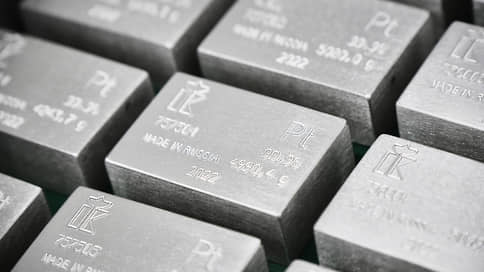The Ministry of Finance is preparing tax breaks for the production of gold-platinum concentrate
[ad_1]

The Ministry of Finance will adjust the tax burden on the extraction of platinum group metals if the concentrate contains gold. Companies that mine gold-platinum concentrate faced a 3.5-fold increase in taxes, although the tax burden for gold was kept at the same levels. As a result, some projects became unprofitable.
The Ministry of Finance is preparing a package of amendments to the Tax Code, according to which an increased coefficient for the mineral extraction tax will not be applied to the production of concentrates containing both platinum group metals and gold. This is stated in the response of the Ministry of Finance to the Commissioner under the President of Russia for the protection of the rights of entrepreneurs Boris Titov, the office of the business ombudsman reported.
According to the business ombudsman, he was contacted by the management of the Kosvinsky Kamen company, which is developing the Tylay-Kosvinskoye deposit in the Sverdlovsk region. The deposit’s platinum and gold reserves, including production, at the end of 2021 amounted to 4.3 tons. The shareholders of Kosvinsky Stone are JSC Eurasia Mining Service with 68% of shares, individual A. Larin – 25%, National Settlement Depository – 7%. The parent company Eurasia Mining Plc is registered in the UK.
The company’s appeal states that the increase in the tax burden on platinum mining in 2021 has led to unprofitable production. Then the Ministry of Finance introduced an increasing coefficient for the mineral extraction tax of 3.5 for platinum concentrates, but for concentrates containing gold, the tax coefficient of 1 was retained.
Although separate mining of gold and platinum at the deposit is impossible due to their physical properties and such concentrate is recognized as a separate type of mineral resource, the tax authorities of the Sverdlovsk region interpreted the simultaneous presence of platinum as a reason for applying an increasing coefficient. The tax inspectorate divided the object of taxation into two conditional parts and assessed each of them separately with the mineral extraction tax, the office of the business ombudsman reported. The Arbitration Court of the Sverdlovsk Region did not accept the taxpayer’s arguments, since the gold in the concentrate was an insignificant share. At the same time, the methodological recommendations of the Ministry of Natural Resources are on the side of the subsoil user, and the Ministry of Finance indicated in April 2022 that there are no obstacles to the application of coefficient 1 depending on the share of gold content in the Tax Code.
“Under the new conditions, the tax burden for subsoil users mining platinum and platinoids concentrate turned out to be several times greater than for their colleagues mining concentrate with a predominant gold content. And if, when introducing the rental coefficient, the goal was to bring the mining rent for individual ores to the world average level of 2–3%, then for platinum miners it already exceeded 6%, and with the use of an increasing coefficient it reached almost 22% of revenue,” commented Boris Titov. The Ministry of Finance did not provide comments.
This is not the first time that the Ministry of Finance, after increasing the load on the mining sector, adjusts it for individual projects. For example, a zero mineral extraction tax was established for Russian Platinum projects in the Krasnoyarsk Territory, Evraz received a tax deduction for the mineral extraction tax for the Kachkanarsky GOK, and the Sorsky GOK for molybdenum and copper mining projects in Khakassia. Independent expert Boris Lutset believes that in the case of the Ural deposits we are talking about eliminating legal uncertainty, so the proposal may receive support. “Another question is why it took so long to resolve the issue – after all, a frontal increase in the tax burden occurred back in 2021, after which “additional adjustments” were made twice,” he comments. The expert also notes that in the previous edition of the main directions of tax policy, the Ministry of Finance indicated the insufficient effect of already adopted tax decisions on the mining and metallurgical complex, therefore “we can count on a further increase in the tax burden as soon as possible.”
[ad_2]
Source link





